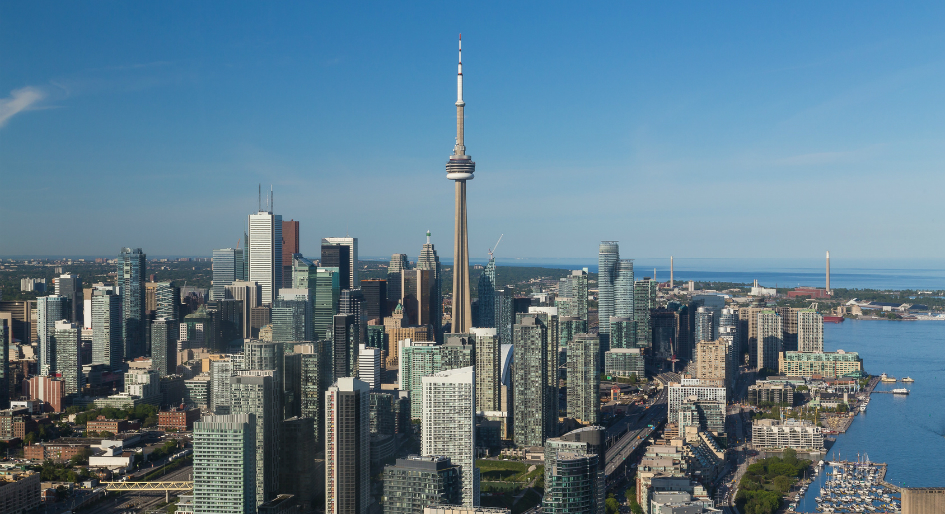Rents for condominium apartments in the Greater Toronto Area (GTA) rose by an average of 9.3 per cent in 2018, surpassing the 8.3 per cent growth recorded in 2017 and marking the highest rate of increase since 2010, according to year-end 2018 rental market results released by Urbanation Inc. Over the past eight years, condo rents have increased by an average of 4.1 per cent.
On an annual basis, rent growth moderated to 6.7 per cent in Q4-2018, representing the slowest annual pace since Q1-2017, with the average monthly rent reaching $2,310. In the third and fourth quarters last year, average rents rose by only 0.5 per cent. Part of the reduced rate of growth is due to a decline in the average size of a unit rented in the fourth quarter to a record low size of 709 square feet, and a shift in leasing activity to less expensive markets outside of the core. In addition, more supply was made available as the number of newly-completed and registered condo units reached its highest level in two years in Q4. Rents rose by a record 11.3 per cent to $3.26 per square foot in Q4-2018.
The total number of units leased through MLS in 2018 remained level with previous years, reaching a high of 27,426 units (compared to 27,327 units in 2017). However, as a percentage of the total stock of condominium apartments, lease activity dipped to a five-year low of eight per cent last year. The reduced level of turnover was likely due to the expanded rent controls for tenanted units introduced in 2017 and the increased barriers to buying a home caused by higher prices and interest rates, as well as new mortgage qualification rules. Low unit turnover limited the amount of supply available in 2018, helping to bolster rents throughout the year.
As renters faced a tight market last year, they began to substitute both their preferred unit type and location. As total lease activity climbed 21 per cent year-over-year in Q4-2018 across the GTA, leases for studio units (with an average rent of $1,793) increased by 44 per cent. In addition, small one bedroom units without dens (with an average rent of $2,024) saw lease activity rise 31 per cent. Meanwhile, activity shifted into the outer 416 markets of Toronto, which include North York, Etobicoke and Scarborough, where leases rose 40 per cent compared to Q4-2017. Average rents in suburban regions of the City of Toronto were 13 per cent lower than in downtown Toronto (at $2,192, compared to $2,520).
The number of new condominium apartments that reached final closing climbed to 6,216 units in Q4-2018, the highest it has reached since Q4-2016 and following a period of extremely low new supply. This helped to create slightly more balanced conditions, as the ratio of leases-to-listings dipped to 75 per cent in Q4, its lowest in three years. Meanwhile, there were 1,902 active listings at the end of 2018, their highest point in nearly four years. This trend is expected to carry over into 2019 as more than 20,000 new condos reach completion.
The total number of purpose-built rental apartments under construction in the GTA climbed to a more than 30-year high of 11,905 units at the end of 2018, which marks an increase of 59 per cent compared to the 7,494 units at the end of 2017. A total of 5,371 purpose-built rentals began construction in 2018, increasing from 3,787 in 2017. In 2019, Urbanation expects nearly 5,000 purpose-built rentals to reach completion, representing the highest level since the early 1990s. Longer-term future supply represented by the inventory of projects proposed for development rose from 34,559 units at the end of 2017 to 40,688 units one year later.
The average vacancy rate for purpose-built rental apartments completed in the GTA since 2005 was 0.6 per cent in Q4-2018. The average rent for available units in these buildings increased by 13.8 per cent on an annual basis to an average of $3.16 per square foot, with an average unit size of 776 square feet.
“Recent housing policy changes, combined with strong demand fundamentals and supply constraints led to record growth for rents in the GTA last year,” said Shaun Hildebrand, president of Urbanation, in a press release. “These factors should continue to keep upward pressure on rents, but to a lesser degree in 2019 as affordability becomes a bigger issue and more condominium and rental units finish construction.”



